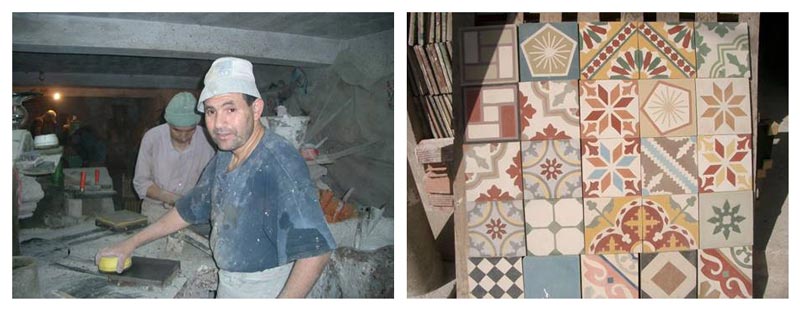The power of handmade
On my first trip to Morocco for the hotel, my client – a Frenchman I had met in Marrakech about 20 years earlier – took me around to lots of private houses, villas and hotels in the area, including Paul Bowles’ and Barbara Hutton’s houses. We also visited a number of artisans – tile makers, rug makers, fabric makers and metalworkers. At the end of 10 days, I told him I felt I’d done no work, but what he’d done was re-educate me into a different way of working.
I was made to think about workmanship – every piece of furniture, fabric, rugs, tiles, basins, vanities, lights, everything, were going to be handmade based on what I’d designed – that was quite fascinating and a very different approach for me.
Because everything was handmade, it did mean that work progressed slowly, which was fine given I was on the other side of the world.
It was fascinating meeting so many different people. There was Titti, the metalworker, who worked with his two sons. His workshop was so crowded and dusty – I’d take computer-generated drawings to him, and he’d draw with chalk on the floor what he thought I wanted him to do. Once we agreed on proportions, he’d make everything from memory – his wonderful drum lanterns are in the foyer; his beautiful drilled lamps in the bar throw light that mimics starlight around the walls.
His workshop was so crowded and dusty – I’d take computer-generated drawings to him, and he’d draw with chalk on the floor what he thought I wanted him to do.
It was a similar story with the tilemakers, who worked in a little cave of a workshop in the basement of a high-rise building, surrounded by clay and glazes and pigments. They’d pour out colours until we found ones that were just right – this would often take hours. From then, they’d make thousands and thousands of tiles by hand. There’s no such thing as copyright in Morocco – the next time I was there, there would be versions of my tiles outside the shop, in bright colours as opposed to the neutral palette I’d selected.

I also visited rug makers, fabric workshops and cane furniture makers, all of whom worked in very traditional ways.
The cabinetmaker, who made everything from the staircase and screens to oriental arches and wardrobes, had a team of wonderful tradesmen. One of the most interesting things was seeing them doing the traditional work on the screens – each piece was individually turned and fitted before being glued – it was so intricate.
The time in Morocco working with all those artisans has made me more aware of certain ways of designing – I’m more likely to mix elements a little more now. Before, I wouldn’t have mixed metal and ceramic together – now I’d consider it differently.
